Get more followers on Twitter: A practical guide to growth
Ready to build your #following? Start here.
Twitter is a powerful tool that can help you find your true fans online.
However, it can be intimidating to begin with very few (or even zero) followers, especially when there is so much competing advice about what tactics actually work.
Below is a straightforward 3-part guide to help you grow an audience in less time.
Phase 1: Lay the groundwork
The first of three phases focuses on leveraging the pieces within your control: the information on your profile, the kind of content you plan to share, and who you can ask for help. This planning phase is essential to growing quickly and avoiding the most common beginner mistakes.
Optimize your profile
A great Twitter profile doubles as a landing page. Think about the main action you want visitors to take (e.g., follow you, click a link, subscribe to your newsletter, etc.) and optimize for that.
Let’s use the following profile as an example.
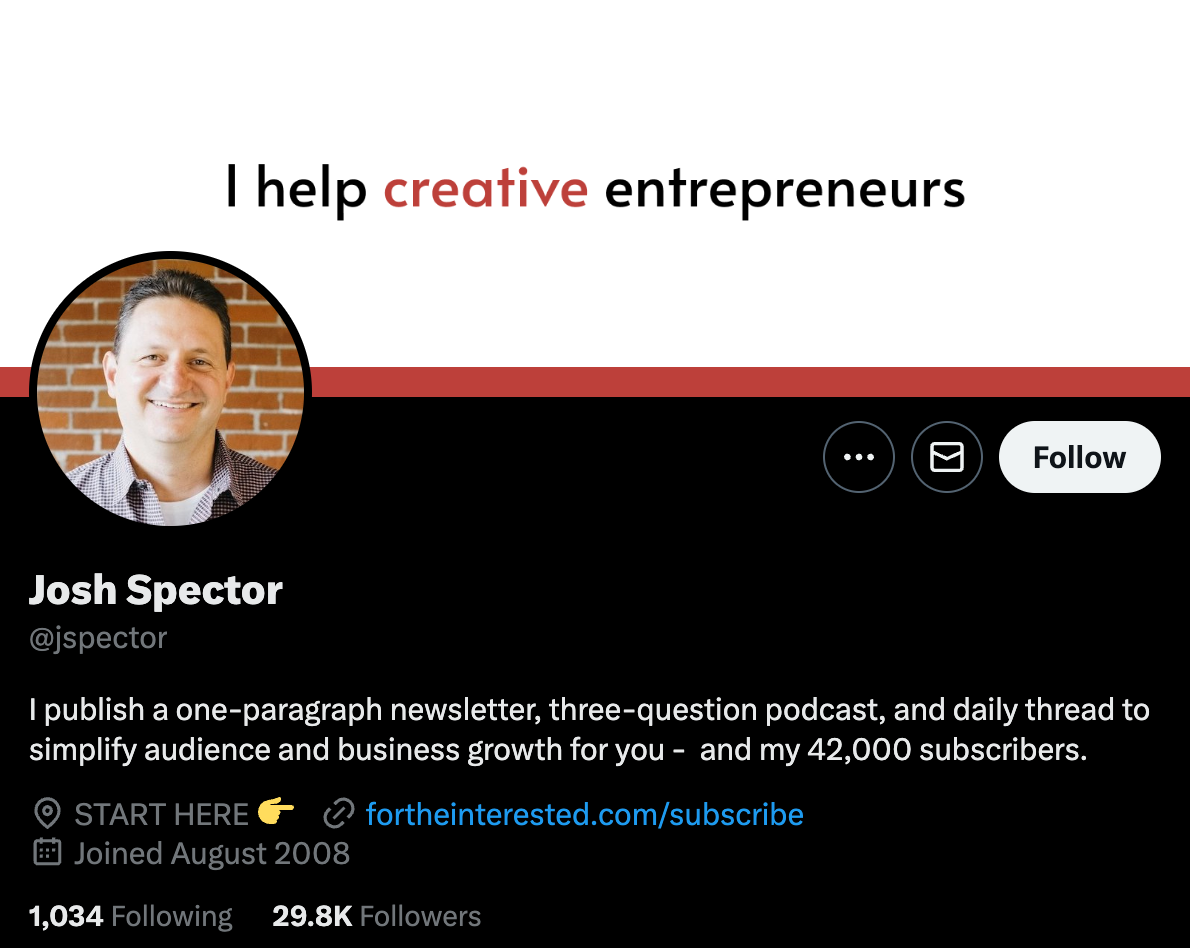
- They use high-quality photos for their profile and banner images.
- They set expectations about what type of content you can expect to see from them on Twitter.
- They include a link to their newsletter to encourage people to follow their work outside of the platform.
One additional step to make your profile stand out: once you start tweeting and see what content people resonate with, pin a tweet that helps people understand who you are, what you do, and prompts them to engage.
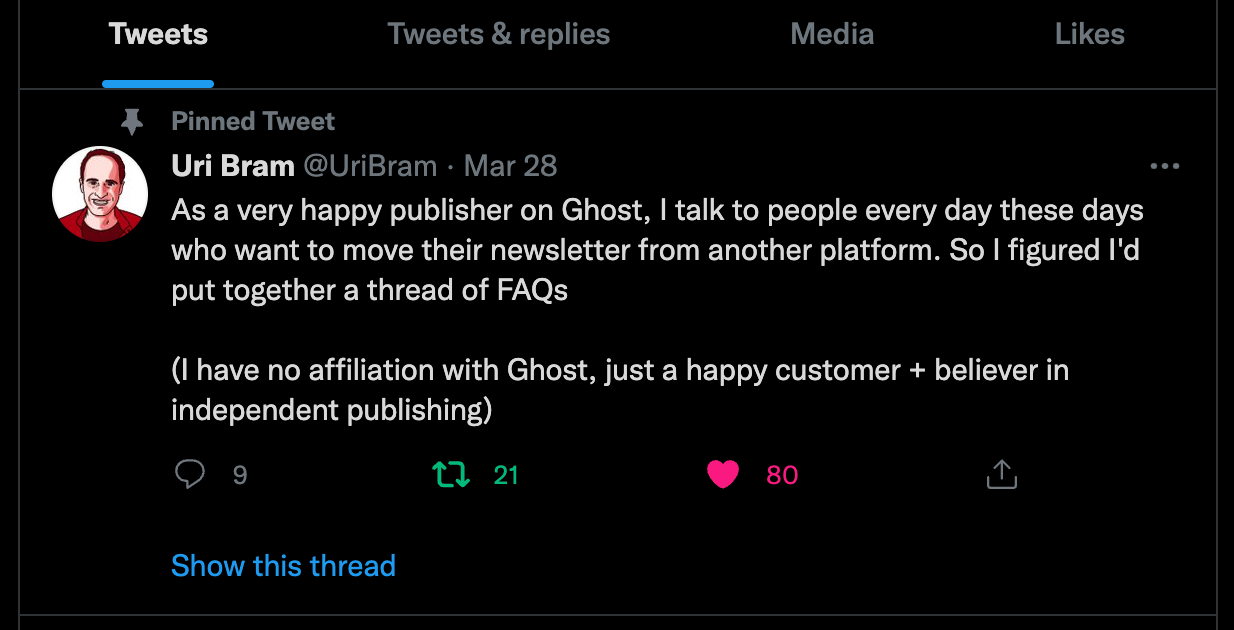
Choose what topics to tweet about
Before you start tweeting, it's crucial to map out the topics you'll cover. Accounts that focus on just 2-3 related subjects (aka content pillars) tend to grow faster than ones without defined categories.
Here are a few examples worth modeling.
- @timsoulo tweets about SEO and content marketing
- @NickNimmin tweets about YouTube and video marketing
- @thecreativepenn tweets about independent publishing and writing skills.
Consider the value you can provide to your followers. What topics are you interested in? Do you have access to people, information, or experiences others could benefit from?
The best niche you can choose is one that takes advantage of natural areas of overlap in your professional and personal life.
Ask your current audience to follow you
One of the best ways to get your first email subscribers is to ask your circles of influence (family, friends, coworkers) to support your work.
The same goes when building a following on a new platform. Asking the people who already know, like, and trust you to follow you on Twitter will help you build early momentum.
This also sends positive signals to potential followers, since follower counts act as social proof on the platform. And the more you grow, the easier it will be to attract future followers.
Phase 2: Respond with value
Now that you have your profile, topics, and initial audience in place, it’s time to start tweeting. But the biggest mistake new Twitter creators make is to tweet lots of great content nobody sees. The solution, then, is to take a more direct approach with what and how you share value.
Follow niche leaders
There are two ways to use Twitter.
- Broadcast your own ideas, media and links.
- Broadcast other people's content with comments, likes, bookmarks and retweets.
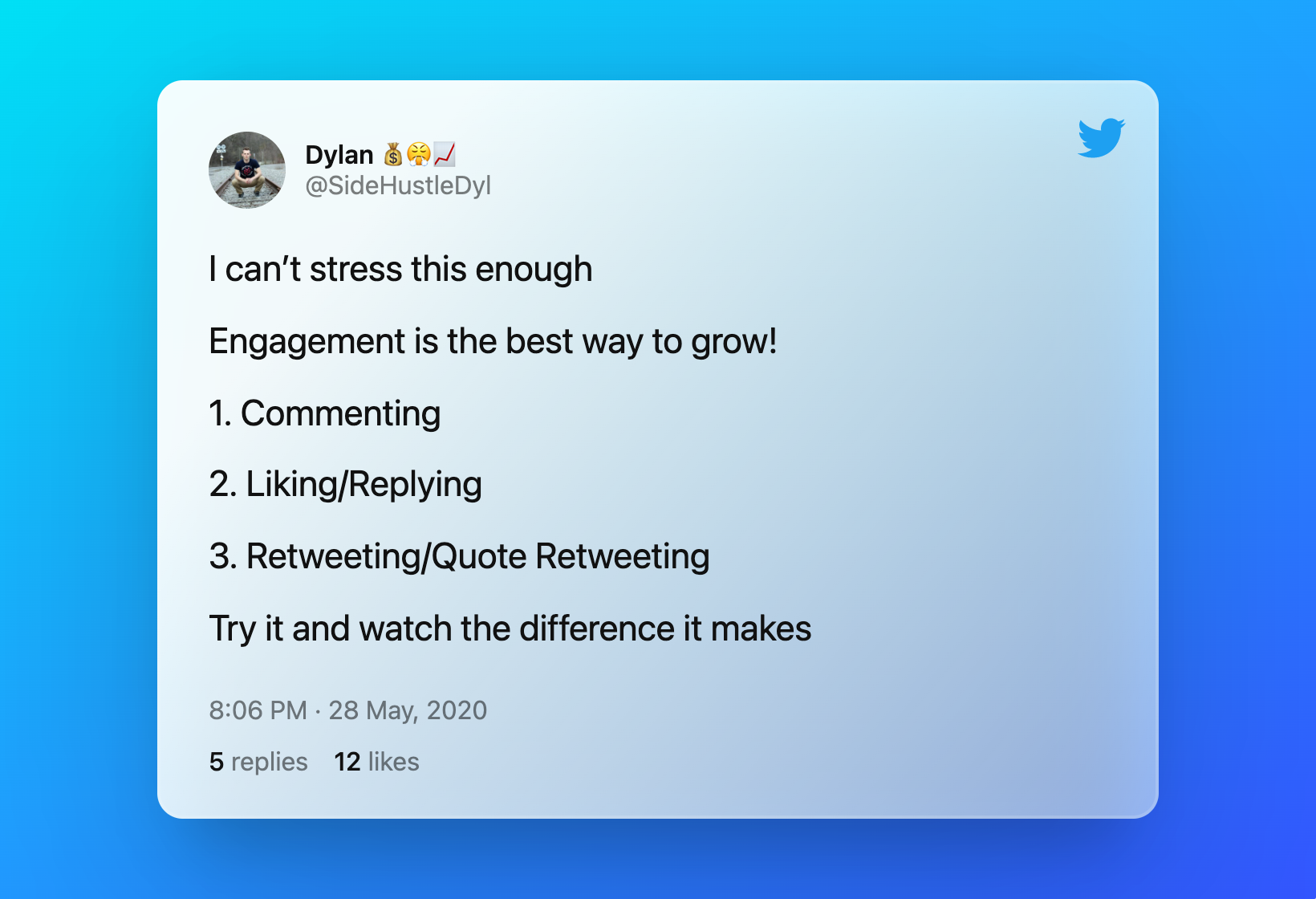
When you're in the early stages of growing your account, you should spend most of your time on the second method. This is the best way to add value when you have a small audience.
Start by following a few dozen of the most influential accounts in your niche. If you’re not sure who these might be, use Twitter’s search bar to search for a keyword related to the content topics you chose earlier, then choose the "People" option.
Here, you'll see several recommended accounts to follow.

Next, block out approximately 30 minutes each day to interact with these accounts. Retweet, like, and bookmark the most helpful pieces of content. When they ask a question, respond thoughtfully. Great answers attract attention not only from the original poster but also from their followers.
By engaging creators with large followings, you'll get exposed to their audiences over time, building your own following as a result.
Use Twitter's advanced search
People are having conversations about your chosen content pillars throughout the day across Twitter's platform. If you could find them, you might have exactly the reply or resource that could help.
This is where Twitter’s advanced search tool comes in.
You can use this tool to find questions related to your niche subject by carefully refining search results. For example, one of the articles recently published on Ghost’s resources was related to email newsletter open rates. On Twitter, we could search for people asking for help with this exact subject.
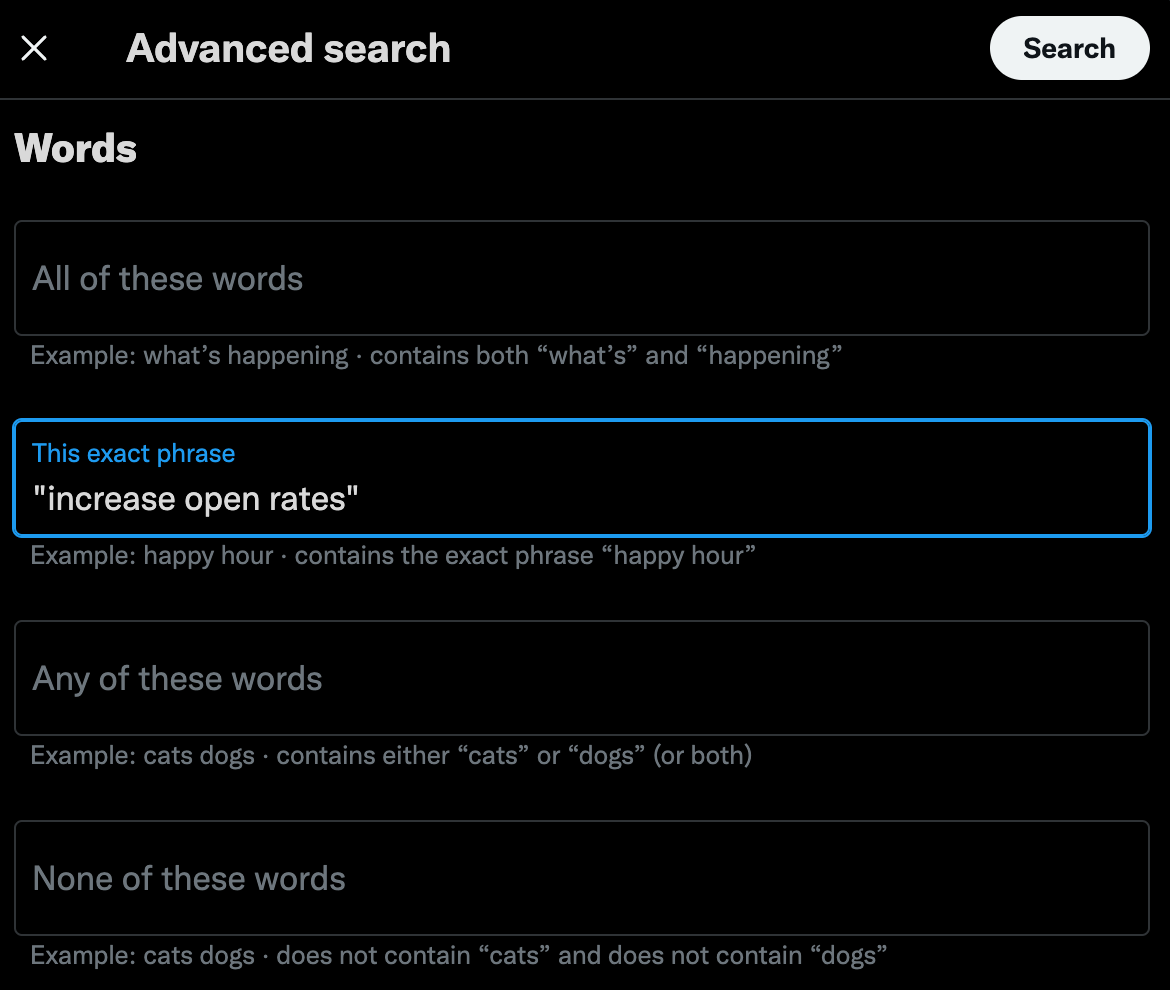
One of the first results was this question.
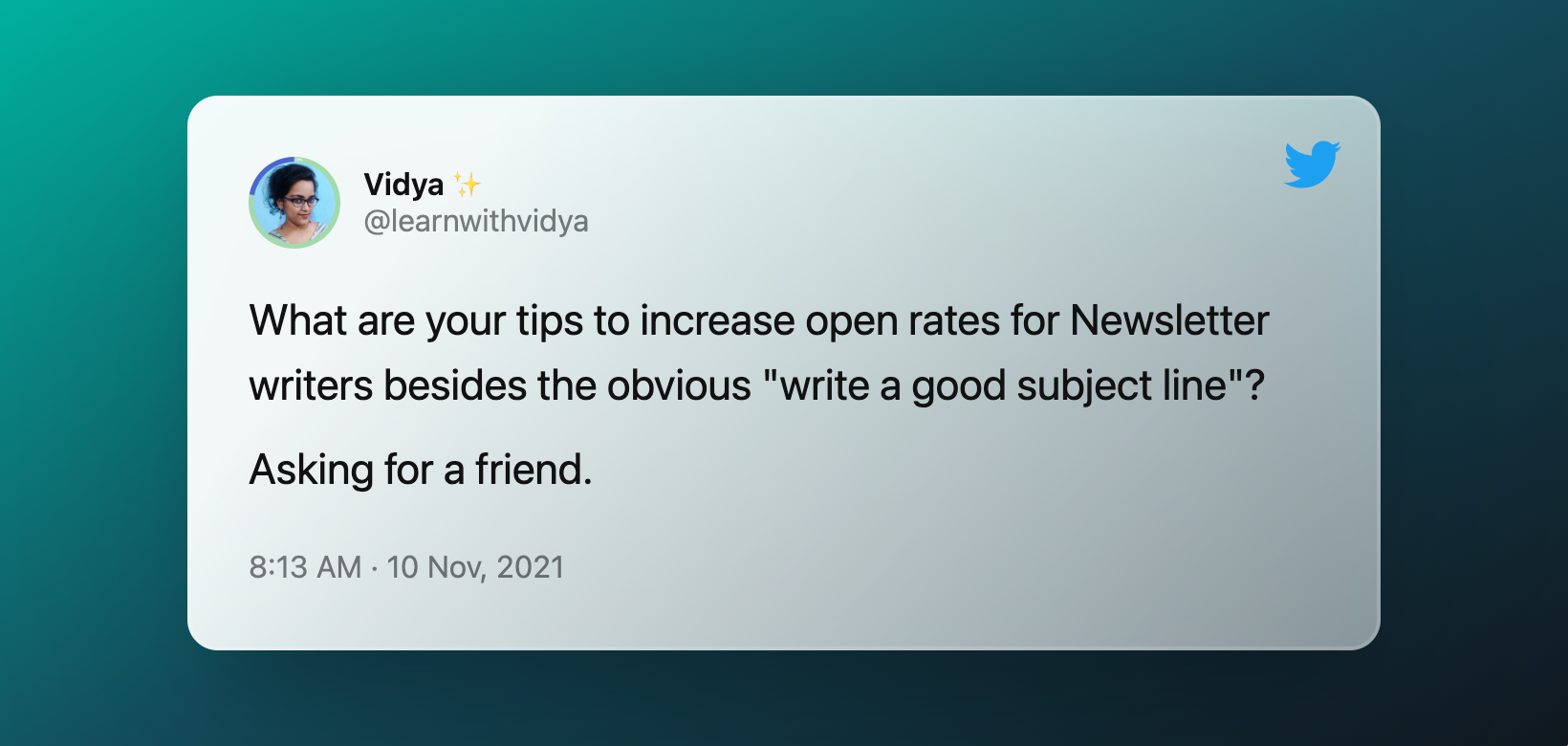
We could reply by quoting a section of the article and then linking to it. This is a proactive way of sharing the value you've already created somewhere else with people who can benefit from it.
Inevitably, many people you share resources with will show their gratitude by following your account.
Phase 3: Become a go-to resource
By now, people are starting to recognize your name and presence. You've grown a small following, and people may be directing their subject-related questions at you. The next step is to turn the value you've been sharing into a steady stream of content that both helps your followers and drives them towards a desired action.
Tweet consistently
Consistency is the basis for growth on any platform, whether you’re sharing a tweet, uploading a video to YouTube, or publishing a newsletter on Ghost.
But what does consistency look like? Is there a certain number of posts you need to hit? Should you share daily, weekly, or monthly?
Consistency means keeping your promises. And since you are the content creator, you get to determine what those promises are; you make the rules. There are large Twitter accounts that tweet several times a day, while others grow by sharing one thought per week. It all comes back to the unique value you provide.
In the early stages, more activity means more growth. Taking the time to reply daily will accelerate your ability to reach new followers. Replies can then be repurposed into content for your main Twitter feed posts in a variety of ways.
- Create a tweet showcasing the question you saw most often this past week and your answer to it.
- Screenshot great conversations and share the image.
- Compile the most helpful resources you’ve found on a monthly cycle.
- Close each day by highlighting one of your followers, along with their project or website.
Experiment with Twitter's features
It’s common for social media platforms to favor users who post using their latest features. So, if you’re willing to experiment, Twitter is likely to recommend both your account and content more often.
Here are a few to help you gain attention.
- Host a Twitter space. Spaces are live audio rooms where followers can listen in and participate if invited.
- Start a Twitter community. Communities are similar to lists in that they allow you to gather people, by invitation, around a specific topic, event, location, or similar factor.
- Create long-form content with threads. These allow you to string multiple tweets into one post, creating a more in-depth resource.
- Use visual content. Although people mainly associate Twitter with its short character limit, accounts that prioritize images and video see faster growth.
- Choose quote tweets instead of retweets. This allows users to add their own content to a shared tweet, drawing attention to the original post and what’s been added.
Choose a sustainable strategy
Writer and marketer Steph Smith shared their journey of growing an audience on Twitter. It took nearly two years to break a couple of thousand followers, one more year to reach 10,000, and an additional nine months to eclipse 50,000.
You can see a chart of their journey below.

Growth compounds over time. The key is to choose a strategy that enables you to be consistent, not only for the first few months, but for years while you become a trusted figure in your industry.
Recycle and repurpose content; share your best work from other platforms; as you stumble upon new ideas, schedule them as tweets in advance. Find ways to reduce the pressure you feel to create something new constantly, so you can focus on providing value for the long run.
Keep the end goal in mind
Twitter is an excellent discovery tool, and if you use the three phrases explained above, you'll be able to find your fans on the platform.
Building a large Twitter following is only a means to end. If you want to get followers to grow your business, you must move that audience onto a platform you control.
This process is called a content marketing funnel. Every successful creator uses some version of it. Here's where you can learn more about how it works: content strategy for creators.






